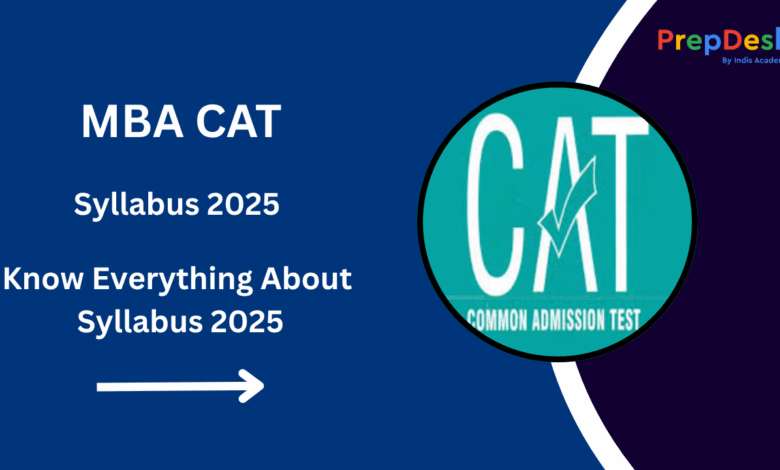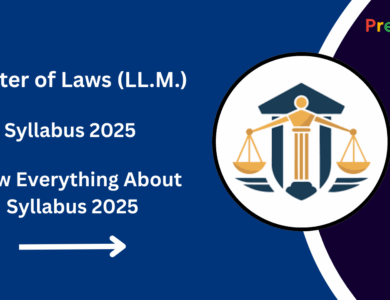CAT MBA Syllabus 2025: Comprehensive Section-wise Guide & Exam Pattern
Explore the detailed CAT MBA syllabus for 2025, covering all three sections: Verbal Ability & Reading Comprehension (VARC), Data Interpretation & Logical Reasoning (DILR), and Quantitative Aptitude (QA). Understand the exam pattern, key topics, question types, and marking scheme to enhance your preparation for the Common Admission Test.

The Common Admission Test (CAT) is one of the most competitive and prestigious entrance exams in India for admission into top management institutes, including the Indian Institutes of Management (IIMs). Every year, lakhs of aspirants appear for the CAT to secure a seat in the best MBA and PGDM programs across the country. The exam tests a candidate’s aptitude in key areas such as Quantitative Ability, Data Interpretation, Logical Reasoning, and Verbal Ability.
The CAT syllabus is designed to assess the overall analytical, problem-solving, and communication skills of candidates. Unlike many other entrance exams, CAT does not have an officially prescribed syllabus. However, the exam broadly covers three main sections: Quantitative Ability (QA), Data Interpretation & Logical Reasoning (DILR), and Verbal Ability & Reading Comprehension (VARC). This syllabus guide provides a detailed breakdown of the important topics under each section, enabling aspirants to prepare methodically and increase their chances of success.
1. CAT Exam Overview
| Parameter | Details |
|---|---|
| Exam Name | Common Admission Test (CAT) |
| Conducted By | Indian Institutes of Management (IIMs) |
| Exam Mode | Computer-Based Test (Online) |
| Exam Duration | 2 Hours |
| Number of Sections | 3 (Quantitative Ability, DILR, VARC) |
| Total Questions | Approximately 66 |
| Marking Scheme | +3 for correct MCQs, -1 for wrong MCQs; No negative for non-MCQs |
| Frequency | Once a Year |
| Purpose | Admission to MBA/PGDM Programs |
2. Section-wise Detailed Syllabus
Section 1: Quantitative Ability (QA)
Quantitative Ability tests your math and problem-solving skills. Topics include basic arithmetic, algebra, geometry, and more.
| Topic | Subtopics & Description |
|---|---|
| Number Systems | Integers, Fractions, Decimals, LCM, HCF, Divisibility Rules, Factors and Multiples |
| Arithmetic | Percentages, Profit & Loss, Simple & Compound Interest, Ratio & Proportion, Averages, Mixtures and Alligations, Time-Speed-Distance, Time & Work, Pipes and Cisterns |
| Algebra | Linear & Quadratic Equations, Inequalities, Surds and Indices, Polynomials, Functions, Arithmetic & Geometric Progressions |
| Geometry | Lines and Angles, Triangles, Quadrilaterals, Circles (Chord, Tangent), Coordinate Geometry (Distance, Midpoint, Slope, Line Equations) |
| Mensuration | Perimeter and Area of 2D Shapes, Surface Area & Volume of 3D Solids (cube, cuboid, cylinder, cone, sphere) |
| Modern Math | Permutations & Combinations, Probability, Set Theory, Binomial Theorem |
Section 2: Data Interpretation & Logical Reasoning (DILR)
This section tests your ability to interpret data and solve logical puzzles.
| Topic | Subtopics & Description |
|---|---|
| Data Interpretation (DI) | Tables, Bar Graphs, Line Charts, Pie Charts, Mixed Graphs, Caselets, Data Sufficiency |
| Logical Reasoning (LR) | Seating Arrangements (Linear, Circular, Rectangular), Blood Relations, Directions, Syllogisms, Venn Diagrams, Puzzle Tests, Coding-Decoding, Ranking & Ordering, Clocks & Calendars |
Section 3: Verbal Ability & Reading Comprehension (VARC)
This section evaluates English language skills including comprehension, grammar, vocabulary, and critical reasoning.
| Topic | Subtopics & Description |
|---|---|
| Reading Comprehension (RC) | Understanding passages, Main Idea, Tone, Inference, Author’s Purpose, Vocabulary in Context, Fact vs Opinion |
| Grammar & Usage | Sentence Correction, Error Spotting, Tenses, Subject-Verb Agreement, Articles, Prepositions, Conjunctions |
| Vocabulary | Synonyms, Antonyms, One-Word Substitution, Idioms & Phrases, Fill in the Blanks |
| Verbal Reasoning | Para Jumbles, Para Summary, Sentence Completion |
| Critical Reasoning | Arguments, Assumptions, Inferences, Cause and Effect, Strengthening/Weakening Arguments |
3. CAT Exam Pattern & Marking Scheme
| Section | No. of Questions | Marks per Question | Total Marks |
|---|---|---|---|
| Quantitative Ability (QA) | 22 | 3 | 66 |
| Data Interpretation & Logical Reasoning (DILR) | 20 | 3 | 60 |
| Verbal Ability & Reading Comprehension (VARC) | 24 | 3 | 72 |
| Total | 66 | – | 198 |
Note: Negative marking of -1 applies only for incorrect MCQ answers. No penalty for non-MCQ incorrect answers.
4. Recommended Books for CAT Preparation
| Section | Book Title & Author |
|---|---|
| Quantitative Ability | How to Prepare for Quantitative Aptitude for CAT by Arun Sharma |
| Data Interpretation & Logical Reasoning | Logical Reasoning and Data Interpretation for CAT by Nishit K. Sinha |
| Verbal Ability & Reading Comprehension | Verbal Ability and Reading Comprehension for CAT by Arun Sharma & Meenakshi Upadhyay |
| Vocabulary & Grammar | Word Power Made Easy by Norman Lewis |
5. Preparation Tips for CAT 2025
- Master Fundamentals: Build strong basics for every topic.
- Practice Regularly: Solve a variety of problems daily to strengthen concepts.
- Take Mock Tests: Regularly attempt full-length mocks to improve speed and accuracy.
- Analyze Mistakes: Review errors in mocks and practice those areas.
- Improve Reading: Read newspapers, editorials, and books to enhance comprehension.
- Revise Often: Keep revising formulas, grammar rules, and vocabulary.
- Stay Consistent and Calm: Regular preparation beats last-minute cramming.
6. Download Official CAT 2025 Syllabus PDF
You can download the official detailed CAT syllabus PDF here:
Download CAT 2025 Syllabus PDF
Conclusion
The CAT exam evaluates a broad range of skills in quantitative aptitude, data interpretation, logical reasoning, and verbal ability. This detailed syllabus guide will help you plan your preparation effectively. Stay disciplined and focused, and use this syllabus as your roadmap to success in CAT 2025.
FAQs
-
Is there negative marking in CAT? Yes, -1 for every wrong MCQ answer.
-
How long is the CAT exam? 2 hours total.
-
How many sections are there? 3 sections: QA, DILR, VARC.
-
Are sectional cutoffs applicable? Yes, many institutes have them.





